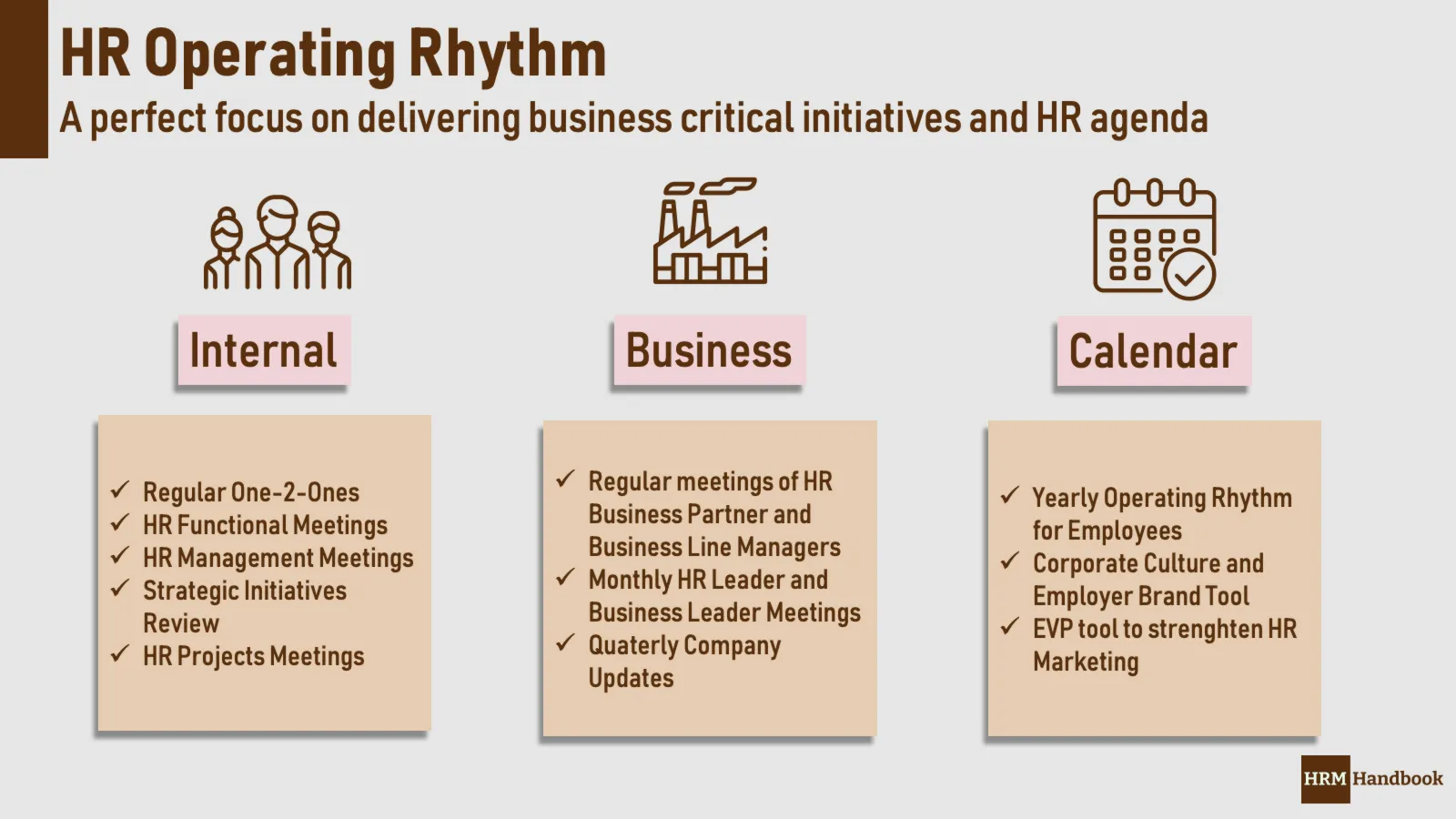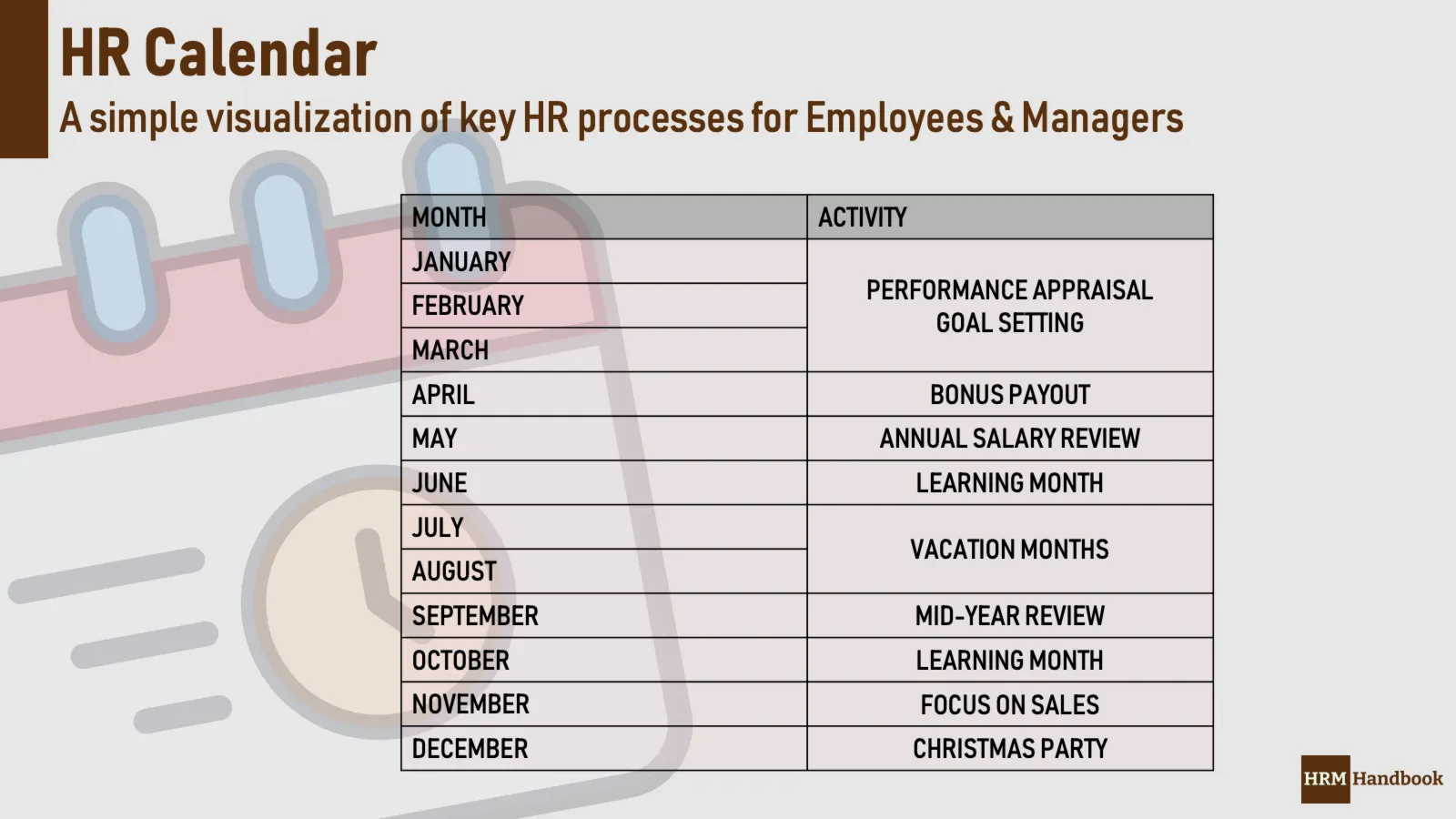Business Driven HR Operating Rhythm
Interactions and proper communication channels are essential for any success in the business. Innovations usually do not happen if employees do not interact and share information; no team can achieve sustainable results without collaboration and clarity about the required outcomes.
It means that no change or development comes without a proper business operating rhythm. The team needs to align around aims, and it has to share the progress during the exercise. On the other hand, it is not just about meetings and their agendas.
Interactions between people in the organization allow us to gradually check progress, share ideas, and build our knowledge base. The team without healthy interactions and valuable relationships falls apart.
Having a stable operating rhythm is a roadmap to success. Of course, Human Resources is not an exception. However, it has to incorporate several different rhythms into its way of working.
Human Resources is also a guardian of corporate culture; thus, it has to ensure that a robust operating rhythm exists. As always, being a role model helps. Moreover, no leader can ignore that having a rigor sets up a framework for employees and managers to operate in.

A competitive Human Resources Management department always follows the business. It drives its plan, and it also embeds all critical business initiatives into its projects. It does not wait for tasks; it creates the people management agenda for leaders.
Human Resources has always identified critical initiatives and projects, and it has to take over lead and management of them. It is accountable for specific bits of the business strategy, and it has to demonstrate absolute ownership. With those critical projects, Human Resources has to make them fully incorporated in the HR Business Operating Rhythm. It has to ensure that people in the organization enjoy higher levels of competency and skills.
High-Performance Teams keep the rigor. Team members meet and regularly interact to check the progress, share issues, and deal with challenging problems. They also celebrate successes, and they discuss lessons learned over the last few weeks.
Internal Operating Rhythm of Human Resources Team
An internal operating rhythm in Human Resources always starts with individuals in the team. They have to share their tasks with bosses, and they have to consult how issues and assignments will be solved.
Also, it is quite usual to keep a monthly planning procedure in Human Resources. Most initiatives are long-term, and one month to monitor the progress, plan the next steps, and discuss issues is sufficient.

On the other hand, it is crucial to keep the same frequency of meetings. Cancellations should not occur regularly, and there should always be enough items on the list.
The most successful operating rhythm is:
- Weekly or Semi-Weekly One to One meetings
- Weekly Functional Catch-Up meetings
- Weekly Meetings of HR Functional Managers and HR Business Partners
- Detailed Monthly Functional meetings
- Monthly Strategic Reviews to check the progress and plan next steps
- Monthly or Quarterly HR Dashboard and Scorecard Reviews
Internally, it is critically important to keep all employees engaged and informed about the latest development and business development. They have to be notified by HR Managers about the strategy and all strategic initiatives to understand how their tasks and duties contribute.
Additionally, it is crucial to keep the flow of internal Human Resources meetings logical. They have to follow in a sequence as the team can build on the bottom-up knowledge. Also, the management has to keep the ability to identify issues and gaps and inform about strategic initiatives regularly.
Regular Interactions with other Business Functions
With other business functions, it is essential to keep the HR initiatives and tasks on their schedule. Human Resources is accountable for the people management practices, and it has to monitor its internal clients. HR Managers help other business leaders to upgrade their teams, develop skills, and competencies.
Being in contact with internal clients links HR projects with the business. All HR projects should not bring benefits to Human Resources; their advantages and outcomes need to make the company competitive and profitable.
Also, the operating rhythm helps connect and link business priorities, other functions in the organization, and Human Resources. The most common and most efficient set up of business-related operating rhythm is:
- Weekly regular meetings of HR Business Partners and Line Managers from Functions
- Monthly meetings of the HR leader and the Business leader
- Regular attendance of the HR leader at the senior leadership Meetings
- Quarterly company-wide presentation of HR initiatives, including Questions and Answers session.
There is one more critical element. The HR leader has to be fully aligned with the CEO of the business. They have to share their priorities, and they have to act as one. No HR initiative should be kicked-off without being backed up by the leader of the organization. The CEO has to be an essential part of the HR operating rhythm.
HR Calendar as an Employee Navigator
The HR Calendar is an excellent tool for employees and managers to see what the year looks like in terms of the main HR processes. It helps both managers and employees in setting mutual expectations. Then, if they agree to discuss the conditions for promotion during the appraisal interview, both parties cannot expect it to happen at a different time. The HR Calendar makes it clear when the appraisal season is.

A good HR calendar also clearly indicates when the peak seasons for training activities are, when it is volunteer time, when it is appropriate to start taking vacation time, and when bonuses can be expected to be paid. So it’s a clear indication of when a manager and employee will need to focus on HR processes more than in other months.
If the HR calendar is well prepared, it is also a good tool for Employer Brand, because any manager can use it to clearly explain to the candidate how the company works with employees and what consequences the employee can expect.
A great HR calendar also takes into account how the company operates and does not schedule any events into the company’s main business seasons, as everyone in the company has to focus on the customers and meeting the company’s challenging goals.